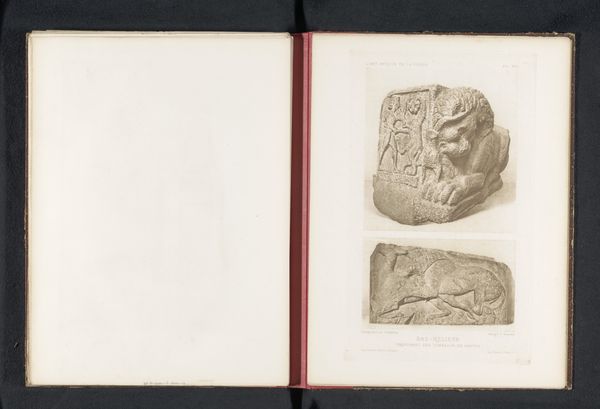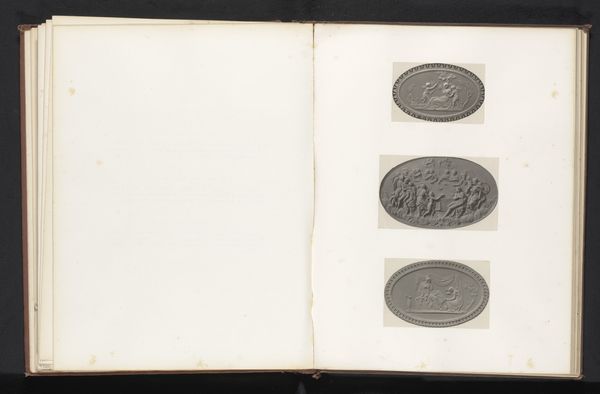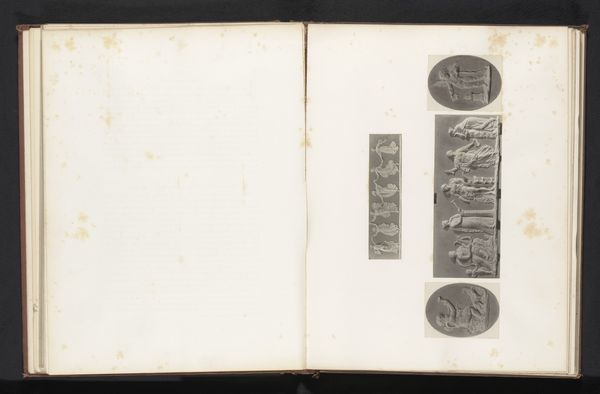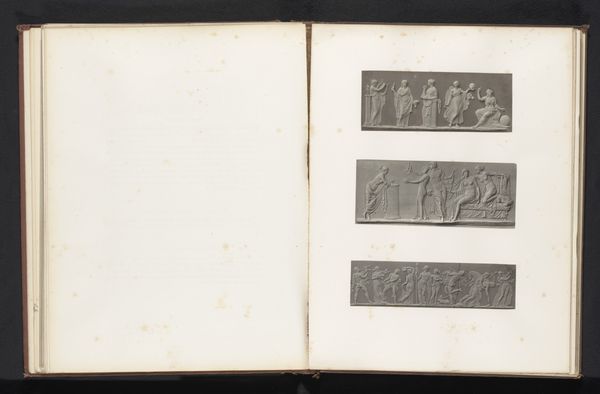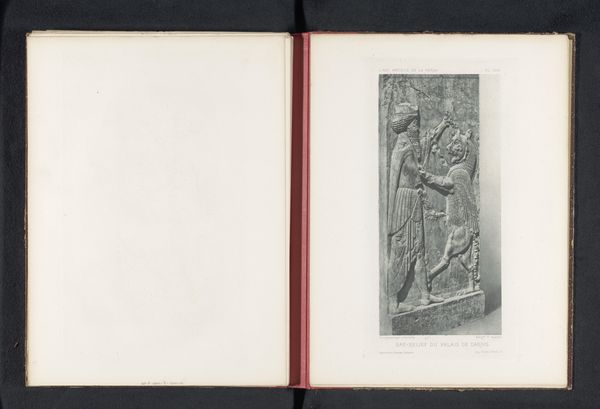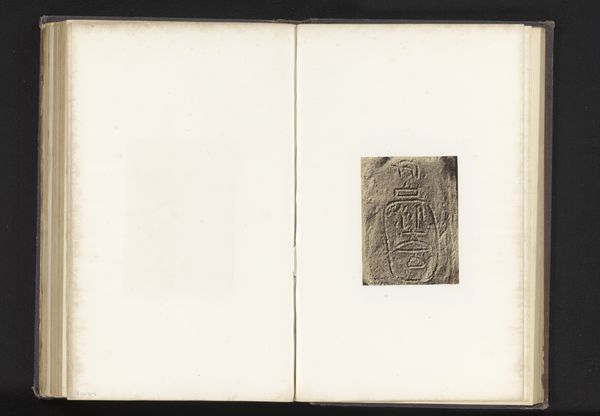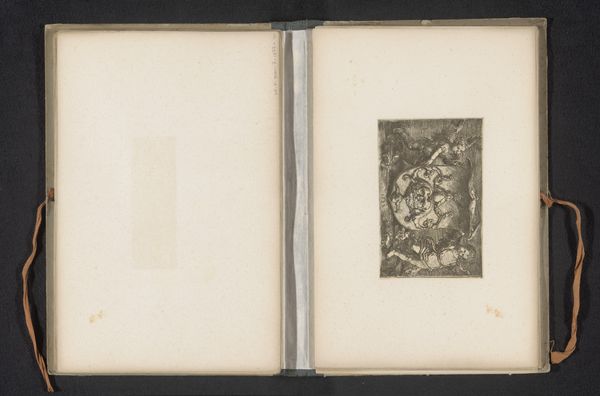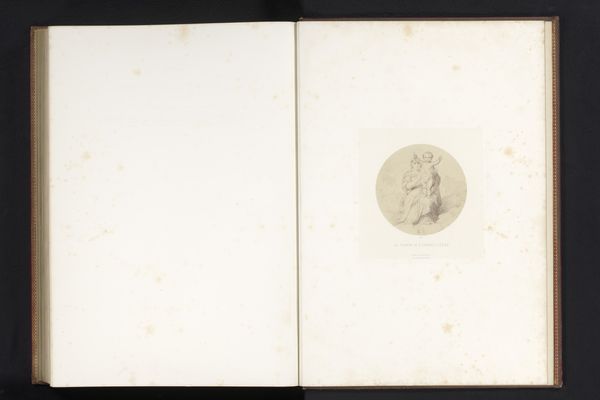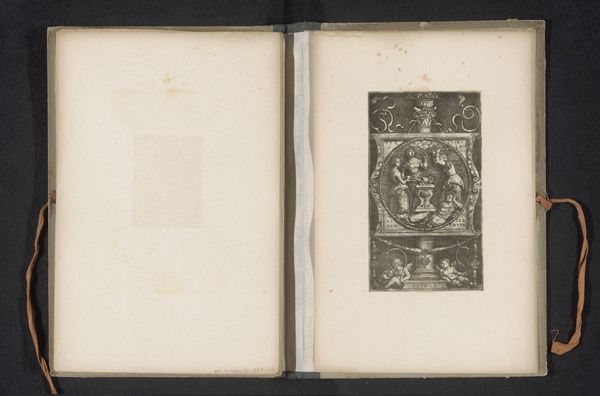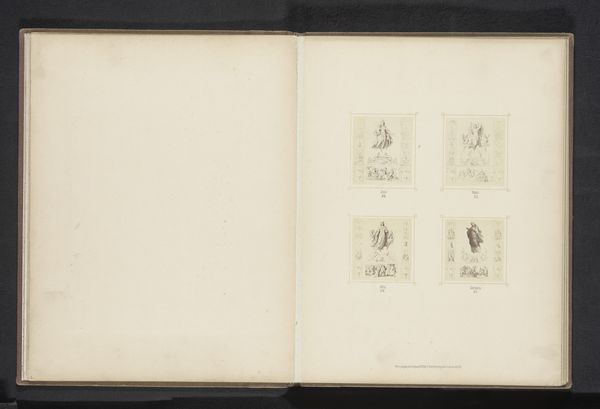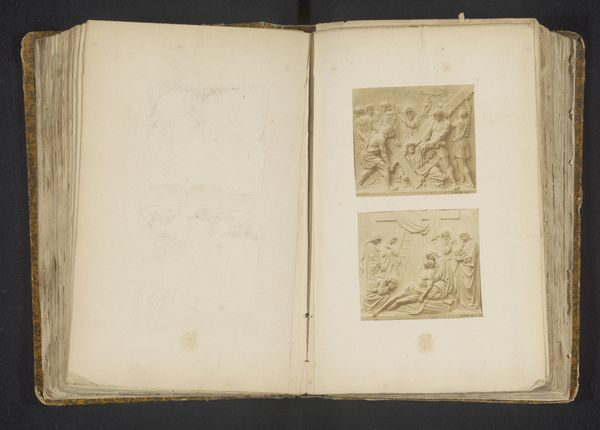
Bas-reliëfs van Minerva, Juno met een scepter en Jupiter met bliksemschicht en een scepter before 1873
0:00
0:00
print, relief, engraving
# print
#
greek-and-roman-art
#
relief
#
figuration
#
ancient-mediterranean
#
history-painting
#
engraving
Dimensions: height 361 mm, width 270 mm
Copyright: Rijks Museum: Open Domain
Curator: This is an engraving showcasing bas-reliefs depicting Minerva, Juno, and Jupiter, created before 1873 by Joseph Cundall. I'm struck by how these prints translate the original sculpted forms. Editor: The immediate effect is one of controlled power, wouldn't you agree? There's a stateliness to the figures, but presented as monochrome prints in an album, it reduces these powerful classical icons to easily-digested commodities. Curator: Precisely! The choice of presenting them as prints speaks volumes. This method made classical art more accessible to a wider audience, impacting how these powerful images were perceived and circulated in society. Did accessibility enhance the classical style’s prestige or cheapen it? Editor: An interesting question, but isn’t the creation of prints like these just another means of reproducing the Roman elite's appropriation of earlier Greek art? And now Cundall appropriates those appropriations! What materials were used to create these bas-reliefs in the first place, and by which artisans? And to what purpose would these figures have served in Roman culture? This, for me, points to their true historical context. Curator: Of course. But consider the role these images play now, within the context of 19th-century visual culture. They are, in a way, being re-purposed and re-packaged for a different consuming public. A public eager to participate in an educated discourse. The figures act as visual touchstones. Editor: Certainly, it reveals much about how ancient art continued to function, providing authority to contemporary societal power structures by evoking a connection to the supposed superiority of previous regimes. Even reproduced as relatively affordable prints, that feeling of access could well reinforce prevailing social hierarchies. Curator: I think examining Cundall’s choices reveals a deliberate strategy in popularizing classical themes, transforming their meaning. These figures weren't merely aesthetic objects; they were tools of cultural dissemination and instruments in the construction of collective identities, mass produced, made readily available. Editor: I agree. The prints speak volumes about art's role in shaping, justifying, and mediating the grand narratives of power that stretch through centuries. Curator: A lens into understanding the socio-cultural values of a society as much as the artistry of the depicted subjects.
Comments
No comments
Be the first to comment and join the conversation on the ultimate creative platform.
